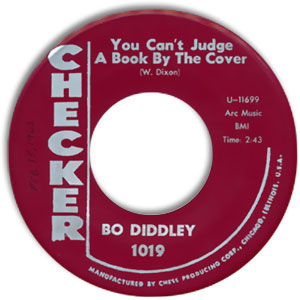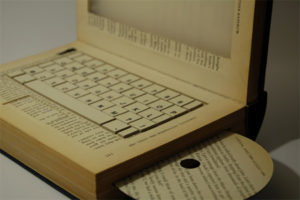[vc_row][vc_column][vc_column_text]Annie Proulx learned to read when she was four. She read obsessively, as writers-to-be tend to do. When she was eight, she fell for Jack London’s Before Adam, a book with a black buckram cover that “influenced my choice of library books for years.” When she was eleven, she was seduced by Mutiny on the Bounty, “bound in tropic beach-sand beige. From then on I favoured books with beige covers.”
My mother used to warn me, and Bo Diddley did, too: You Can’t Judge a Book by its Cover.
But I did. I still do. And I’m not the only one.
When my husband and I moved from our country house to the city, we had to reduce our 10,000-book library by a third. We were about to deliver the lasted orphaned volumes to the Symphony Sale, when our real estate agent asked if she could take some.
“Sure!” we said, delighted to have a reader for a realtor. For an hour she sat on the floor, making separate heaps of all the books with red covers, white covers, and deep blue covers to decorate other houses she was staging to sell. “Buyers love books!” she exclaimed. Or at least, they like the covers.
First, book covers were slabs of wood
Stacks of parchment or vellum pages—called codices—were stored with pieces of wood laid on top to keep the loose sheets square and protected.
It wasn’t until the fifth century that pages were bound together and fitted between hard covers made from thin wooden boards covered with leather. Because vellum was notorious for swelling during hot, humid weather, the wooden covers were often held together with leather or metal straps and clasps.
These first bound books were stored flat on a shelf, spines facing back. The book lover would write the title in ink along the fore-edges of the pages, the way I used to print MATH and GEOGRAPHY on the fore-edges of my high school textbooks so I’d know what I was grabbing from the jumble inside my locker.
Around the sixteenth century, readers started to stand their books up on the shelf; within a hundred years, books in every library stood at attention. To identify the standing book, printers glued a strip to the spine, printed with the title, author, and publisher.
But not all books came with covers. As late as the nineteenth century, books were sold in plain paper wrappers, the pages temporarily stitched together. Publishers weren’t willing to shell out for binding if the book wasn’t going to sell. A book lover was expected to take the book to a binder and have it bound to match his personal library.
I imagine my book shelves lined with identical spines.
No flashy colour, no variation in type. Nothing to distinguish a specific book but its title. It’s a dreary, lawyerish thought.
Scanning my library, my eyes light on the soft, mouse-grey cover of The Tale of Peter Rabbit, the Beatrix Potter book my Aunt Marion gave to me the day I was born; the tatty paper Fun with Dick and Jane book that taught me to read; the white leather Bible I read cover to cover when I was eleven; the red Penguins, hard blue Hardys, fiery Salingers, and black-spined Capotes that fed my adolescence; the cheesy embossed Gone with the Wind I read straight through the night my son was born—all the myriad volumes, slim and fat, ragged and pristine, that are the book-markers of my life.
The same thing happens when I look at the covers displayed on my iPad: the list is shorter because I have only a decade of digital reading stored there, but these covers do the same for me as the spines on my library shelves: they are my Proustian madeleines, opening stories in my memory without ever clicking on the book or pulling it from the shelf.
Jackets, not Covers
Technically speaking, what I’m looking at aren’t book covers, they are dust jackets. Dust jackets evolved in the 19th century to protect expensive leather and silk covers. Books came wrapped in plain paper that was thrown away once the book got safely home. By then, covers were decorative: some jackets had cut-out windows that displayed the beautiful “naked” cover designs.
It wasn’t long before publishers figured out that the dust jacket itself could be used to promote the book by drawing readers’ attention much more cheaply. Within a couple of decades, most dust jackets were illustrated; as jackets became more artful, book covers themselves lost their decorative edge.
In a blog last summer, Neil Gaiman admitted to a deep affection for the dust jackets of the 50s, 60s, and 70s. “Paperback covers used to be beautiful, and were painted, and told you so much.” When his publisher decided to reprint a series of Gaiman mass market paperbacks, he asked if Robert McGinnis, the Picasso of vintage paperback covers, could be commissioned for the “gloriously retro covers.” McGinnis, still working at 90, agreed, and American Gods, the first of the new covers, was released a few months ago.
Plain Brown Wrappers
I remember my mother reading a book with a plain brown wrapper, intended to protect not the book, but her daughters’ tender eyes. The book was Fanny Hill. Lady Chatterley’s Lover arrived in our house in a similar disguise.
Today I don’t need a plain brown wrapper to read a banned book in peace: I just call it up on my ereader, which functions as a utilitarian, unadorned, generic cover. It’s as if we’ve time-travelled back through the centuries, paying for the pages and paying again for the covers to keep them safe from wear and prying eyes.
A local used-book dealer told me about a fellow who came into his store looking for a book. Not a particular title or a certain author; he just wanted a book about yay big by yay thick. He spent the afternoon roaming the aisles and finally came to the counter triumphantly carrying his chosen book, his ereader perched on top. His plan was to cut out the pages of the paper book to make a cover for his Kindle—a secret within a secret within a secret.
When I was thirteen, I hid my nurse novels inside the pages of thick Thomas B. Costain sagas. Later, my friends and I would to stroll down the aisle of a train or a bus and concoct stories about the passengers based on whether they were reading Jacqueline Suzanne, Erica Jong, or Margaret Atwood. Now such strolls yield little more than plain brown—or blue or pink—ereader covers.
It makes me wonder: would Fifty Shades of Gray have been such a bestseller if ereaders hadn’t yet been invented?[/vc_column_text][/vc_column][/vc_row][vc_row][vc_column][vc_separator][vc_column_text css=”.vc_custom_1477363865032{padding-top: 10px !important;padding-right: 10px !important;padding-bottom: 10px !important;padding-left: 10px !important;background-color: #ededed !important;background-position: center !important;background-repeat: no-repeat !important;background-size: cover !important;border-radius: 2px !important;}”]
Is there a book cover you’ll never forget? Do you remove the dust jacket when you read a book?
[/vc_column_text][vc_separator][/vc_column][/vc_row]







13 Comments
Love the first installment, Merilyn!
Thank you! More coming soon.
Comment
This is fun. I’ll pass it on to a few people. The Gaiman and Pratchett books are classic covers that tell you exactly what to expect from the pages inside. They’re prominent on my (reading for unwinding) shelves. I have a fondness for the Penguin covers, because when I was younger and on a long trip in Portugal in a cold, wet winter, the only English-language book I could afford at one point was the Penguin catalogue — 120 pages of luscious descriptions of intriguing tomes. Salutes to the first pocket books, still recognizable.
I love thinking of you travelling with a catalogue companion! I love the old “naked” covers before dust jackets too: Gene Stratton Porter’s Freckles and Sara Jeanette Duncan’s A Social Departure, and of course the Everyman books of my childhood.
This is so interesting, thanks for writing it. How do you decide what to read in paper and what on screen? I find ereaders frustrating because I rarely see the cover! (But I’m heavily dependent on my kobo…)
When I’m in Mexico, everything is digital: no English bookstores where I live! In Canada, almost all paper. So I guess availability and weight are my criteria. More and more I find myself buying digital to “sample” and if I love a book, buying a paper “keeper” copy.
I shelved Merilyn’s 6,666 books post-move… one of the reasons I so (oddly) enjoyed unpacking and reshelving the library was looking at the covers. It seemed to me that books constituted a visual art collection as well. I look forward to reading more. And you know who to call if you need some more books unpacked.
Be careful what you offer! Oh wait, I’m never moving again.
Lovely, Merilyn. So interesting to read about the history of book covers. I don’t judge a book by its cover but by the first 50 pages Cheryl Foggo once told me, life is too short to read books that don’t grab you in 50 pages.
Wow that was unusual. I just wrote an incredibly long comment but after I clicked submit my comment it didn’t show up. Grrrr. Regardless, just wanted to say wonderful blog!
Love your blog, Merilyn. I can hardly wait to peruse Guttenberg’s Fingerprint. I learned so much from your blog. Did not know that the original dust covers were meant to be discarded. That explains why my parents (born in 1908 and 1917) took them off before they put a new book on the shelf. I attended Ken Cuthbertson’s book launch (A Complex Fate: William L. Shirer and the American Century) at Novel Idea within the past year and was so proud to show off my first edition of The Rise and Fall of the Third Reich (inherited from my parents). Ken kept his enthusiasm in check, remarking that it would be more impressive with the dust jacket in place. A week or so later, I opened an envelope from Ken, containing a facsimile of a dust jacket for the book. Now it looks great on my shelf!
So interesting. I know people who take off the dust jackets so they don’t get dirty while the book is being read!